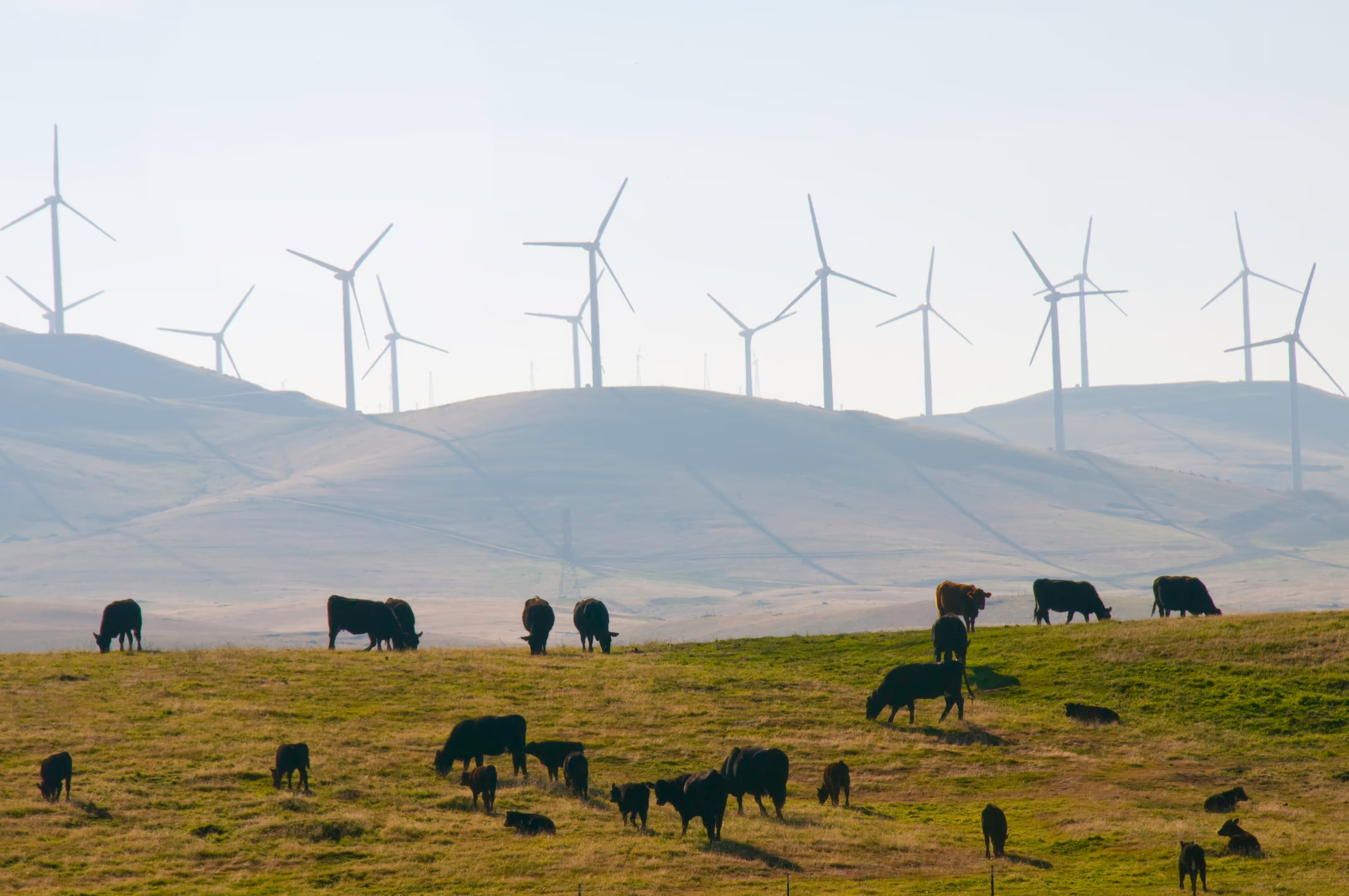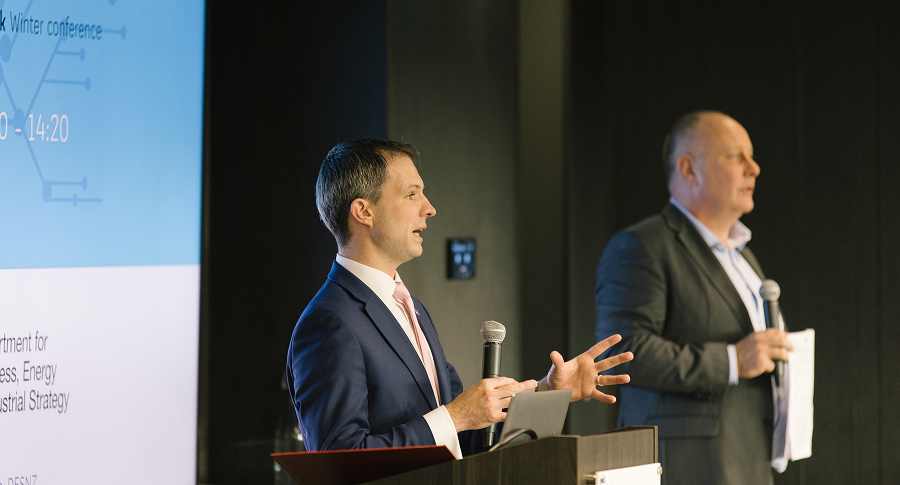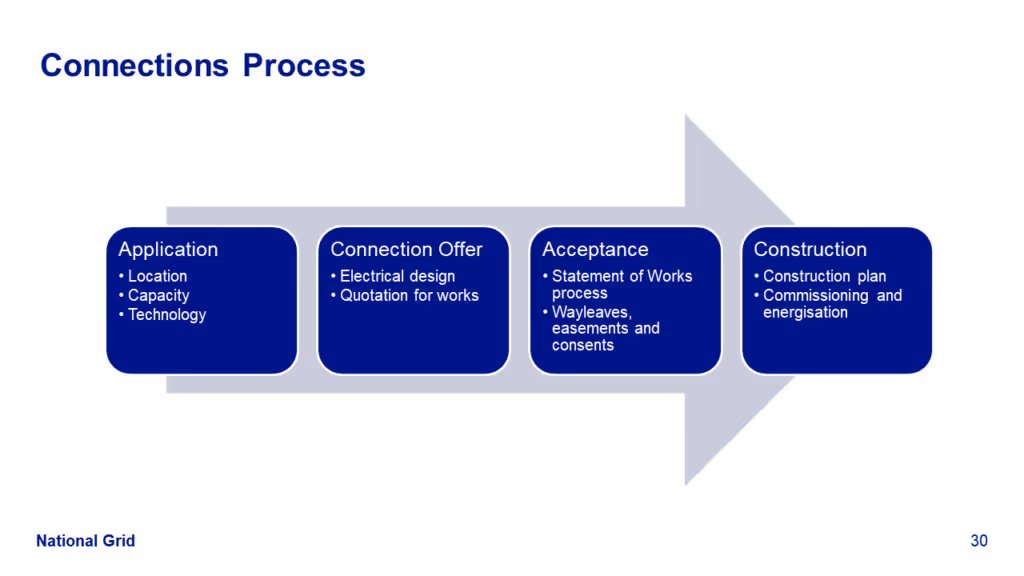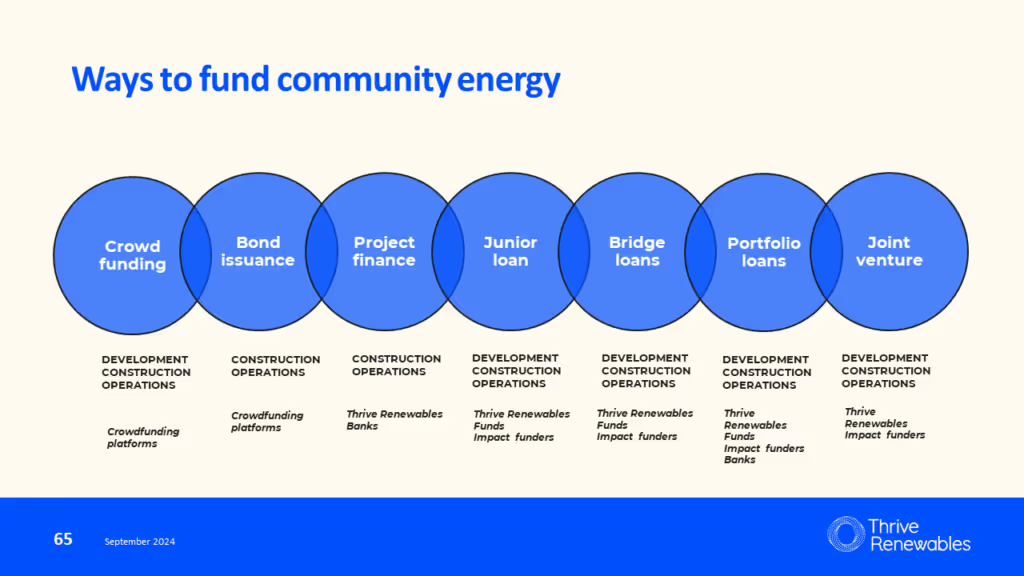On Thursday 12 September, National Grid Electricity Distribution and Regen hosted our second online event of the year, this time with a focus on two of the cheaper forms of renewable energy; onshore wind and rooftop solar.

On Thursday 12 September, National Grid Electricity Distribution and Regen hosted our second online event of the year, this time with a focus on two of the cheaper forms of renewable energy; onshore wind and rooftop solar.

This event forms part of a series of six events (two online and four in-person) that Regen is delivering for National Grid Electricity Distribution (NGED) as part of its programme of community energy support. In light of the Labour government’s promised support of local and community energy, and the steps already taken to remove planning blockages to onshore wind, this session was planned as an opportunity for community energy organisations, local authorities and community members with an interest in establishing their community energy project to come together and focus on the key elements of developing community-owned renewable generation.
The session saw a quick introduction to community energy and some of the key policy changes we’ve been seeing, an introductory session to several of the teams within NGED, presentations from community organisations who have successfully established significant rooftop solar and onshore wind projects and breakouts on these two types of renewables as well. There were over 150 community energy stakeholders in attendance, and a comprehensive, valuable discussion was had. Below is a quick summary of the event proceedings, and some of the points of interest from the session.
Prina Sumaria provided an introduction to community energy, its origins and benefits and some of the policies that have supported its growth up to this point, including Renewables Obligation Certificates (ROCs), Feed-in Tariffs (FiTs) and the Renewable Heat Incentive (RHI).
There was then a quick rundown of some of the bigger policy changes coming in that will impact the community energy sector, namely the founding of GB Energy and its commitment to partnering with energy companies, local authorities and cooperatives to develop up to 8 GW of small- and medium-scale community energy projects. The other major changes ongoing include the establishment of the Onshore wind industry taskforce, which will aim to accelerate onshore wind deployment to 2030 and beyond, and Ofgem’s introduction of the Regional Energy Strategic Planner (RESP), which will provide a new layer of regional governance to help key energy stakeholders, including community energy organisations, in setting the direction of their local energy planning. For more on the plans for the RESP, and for an opportunity to feed into its design, see Ofgem’s consultation page here.
The session saw short introductions from individuals from three different NGED teams:
Laurence Hunter, innovation and deployment manager in the Innovation team, highlighted NGED’s track record of developing and rolling out innovations to benefit customers, such as Active Network Management and Open Data processes. Laurence also touched upon some examples of current projects NGED is running that hold relevance to community energy, including REACH, EQUINOX and VENICE, and the steps that can be taken to partake in or suggest similar innovation projects. You can find out more about the innovation application process here.
Emily Taylor, strategic engagement officer for the South West and the West Midlands, gave an outline of the role they play in supporting Local Area Energy Planning, and how the plan provides a point of regular contact between key stakeholders and the local authority over energy matters. This two-way flow of information helps inform NGED’s forecasting and network planning and allows for a local route to be set for stakeholders to contribute to the trajectory of the energy transition at all levels.
Jack Purchase, a connections strategy engineer, gave a high-level introduction to the connections process, stepping through the application, connection offer, acceptance and construction stages. Jack also briefly explained the different categories of connection processes for different site capacities and some of the steps involved within these processes. You can read more about these processes here.

The conversation around rooftop solar was kicked off by a presentation from Louis du Plessis, development manager at Staffordshire Community Energy. Louis’ presentation mentioned some of the range of projects Staffordshire has already delivered successfully, as well as the strong pipeline of projects they have built and some of the areas they are looking to expand into, including battery storage, heat, wind and the flexibility market.
The presentation dug into the typical proposition Staffordshire makes in its rooftop solar projects and the supply chain it relies upon for marketing, technical appraisals and PV installation. Louis also outlined some key practical advice around building strong supply chain partnerships and standardising and simplifying your processes, as well as some barriers to watch out for, including variances in procurement policy and the availability/consistency of data availability.
The breakout session on rooftop solar featured a panel of experts including Louis du Plessis, Shannon Jackson, UK projects and funding manager at Solar for Schools, and Richard Lane, community energy consultant at Sharenergy. Within the breakout, questions from the attendees dug into the chain of activity required to get a rooftop scheme off the ground, touching upon the importance of external development support from a more established organisation, as well as the need for good project management to build up enough of a pipeline of projects to reduce financial risk.
There was also discussion around building a model to get rooftop solar to those least able-to-pay, and the challenges of integrating solar and heat pumps.
The second presentation on community-owned renewable generation focused on developing onshore wind and was delivered by some of the team behind the Ambition Community Energy wind turbine in Lawrence Weston. This included Monika Paplaczyk, investment director at Thrive Renewables, Otis Harrison, investment manager at Thrive, David Tudgey, project development manager at Ambition Community Energy and Dr. Charles Gamble, co-founder of Community Power Solutions.
Charles and David took the attendees through the different steps of what’s needed to build a turbine as laid out by the Sustainable Innovative Financial Foundations For Turbines (SIFFT) process developed by Community Power Solutions including:
Charles and David also spoke to the attention to detail required in design, and to the transformative effect a single turbine can have on a community in terms of the benefits it can bring, and how, once you get past the challenge of the work needed on the front end of the project, the actual construction process of the turbine can be quick.
Monika and Otis then gave a quick overview of the market as it is currently for community energy organisations looking to establish an onshore wind turbine, citing difficulties around lack of subsidies, the impact of grid connection timings on risk, and labour shortages due to the increasing demand for renewables in the UK that is stretching supply.
Different approaches to funding a project were touched upon, including crowdfunding, bridge, junior and portfolio loans and project finance. Different models of ownership were also discussed, such as full project ownership through purchasing a project or self-development, and shared ownership with a commercial developer.

The onshore wind breakout session, featuring all of the speakers from the onshore wind presentation, featured a broad range of conversations, encompassing how to pivot from sites identified initially for solar to a potential wind project instead through to the challenges of getting generation connected to the grid at the moment.
There was also conversation around looking at using recycled turbines and trying to take advantage of emerging local energy markets to generate community revenue. There was also a general feeling that current regulations might not be suitable and that growing community-owned, small-scale generation requires specific, supportive regulations.
It was great to see such enthusiasm around community-owned renewables at this session. National Grid and Regen will carry this energy forward into our Autumn events in South Wales and Birmingham.
Sign up to receive our monthly newsletter containing industry insights, our latest research and upcoming events.